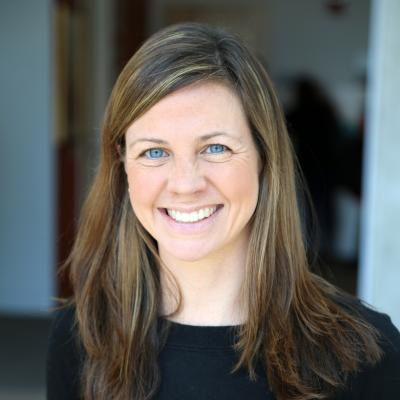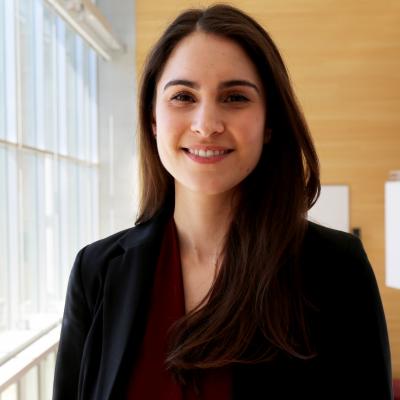High quality care and learning opportunities in early childhood (defined as the first five years of a child’s life) have lasting effects on health and wellbeing. Although all children can benefit from high quality early care and education, nationally, only half of 3- and 4-year-olds are enrolled in any preschool (public or private).
Some groups of children are even less likely to be enrolled in preschool. Hispanic and American Indian children have lower enrollment rates (41% and 44%, respectively), while Asian, white and black children are enrolled at higher rates (54%, 49% and 51%, respectively).
"Living in a neighborhood where other children attend preschool can significantly shape a child’s own educational outcomes."
While a number of factors such as neighborhood availability and affordability of programs can influence preschool attendance, the preschool enrollment rate in a child’s neighborhood plays a role too. Hispanic and black children in particular are more likely to attend preschool when greater shares of their neighborhood peers (defined as all 3- and 4-year olds living in the neighborhood) attend preschool.
Differences in neighborhood-level preschool enrollment could contribute to participation gaps
Overall, we find that children live in neighborhoods where the neighborhood preschool enrollment rates mirror the overall participation rate for that particular group of children. For example, 49% of white children nationally attend preschool,
The graph below shows the differences in neighborhood preschool enrollment rates of 3- and 4-year-olds for young children of different race/ethnicity. Young children are defined as children ages 0-4.
On average, Asian, white and black young children live in neighborhoods where roughly half or more of all 3- and 4-year-olds in the neighborhood attend preschool. Meanwhile, Hispanic and American Indian young children live in neighborhoods, where, on average, only 44% of all 3- and 4-year-olds in the neighborhood attend preschool.
These findings suggest that Asian, white and black young children live, on average, in neighborhoods where they are surrounded by more children attending preschool, which can positively impact whether a child attends preschool. In contrast, Hispanic and American Indian children - the two groups with the lowest preschool participation rates nationally - live in neighborhoods where fewer of their peers attend preschool, which may negatively affect whether they attend preschool. Therefore, increasing preschool enrollment at the neighborhood level may improve overall preschool participation and promote more equitable access for all children.
Racial/ethnic differences found in the neighborhood mix of public and private preschool attendance
The data allow us to examine not only preschool enrollment overall, but also attendance in public vs. private preschool. Compared to white and Asian children, Hispanic, black and American Indian young children live in neighborhoods with higher enrollment in public preschool.
For white and Asian children, neighborhood preschool enrollment is equally split between public and private preschools: about half of neighborhood preschoolers attend public preschool, and around half attend private school. In comparison, Hispanic, black and American Indian young children tend to live in neighborhoods where preschoolers are concentrated in public preschool settings: they live in neighborhoods where 70% or more of neighborhood preschoolers attend public school, and 30% or less attend private preschool.
The greater diversity of preschool types attended by preschoolers in white and Asian children’s neighborhoods could reflect that more preschool choices at the neighborhood level are available to white and Asian children compared to black, Hispanic and American Indian children. In other words, these differences could be a signal that some children have more options and better access to local preschool settings of any type, public or private. It could also mean that some children have greater access to high quality preschool or preschools that meet parents’ preferences.
More research is required to understand these differences. Preschool quality is known to vary both within and across preschool types (public vs. private). Therefore, the neighborhood mix of public and private preschool attendance is not necessarily indicative of the quality of the preschools that children are attending. Differences in public vs. private preschool attendance may be driven by differences in neighborhood availability and affordability of preschools, as well as parent preferences.
Average neighborhood preschool enrollment rates vary substantially by state
State-funded public preschool programs now represent a large share of overall preschool programming in many states, driven by growing investments in state-funded preschool programs over the past three decades. Therefore, state differences in preschool enrollment indicators is an important factor to examine when considering policies and strategies to improve preschool access.
The average neighborhood preschool enrollment rate ranges from 23% in North Dakota to nearly 80% in the District of Columbia. The average neighborhood public preschool enrollment rate also varies by state. States with higher overall preschool enrollment rates also tend to have higher public preschool enrollment rates, which suggests that public preschool enrollment is an important driver of overall preschool participation.
Since the differences we observe across states are driven in part by differences in state policies and funding for preschool programs, these data and findings are particularly relevant for state policymakers.
Racial/ethnic inequities in neighborhood preschool enrollment rates also vary by state
Racial/ethnic differences in neighborhood preschool enrollment rates also vary by state. There are 30 states where there is a statistically significant difference between the neighborhood preschool enrollment of Hispanic children and white children. In these 30 states, compared to Hispanic children, white children live in neighborhoods with substantially higher neighborhood preschool enrollment rates: on average, enrollment rates in the neighborhoods where white children live are 7% higher than in the neighborhoods where Hispanic children live, ranging from 3% to 15% higher.
There are 18 states where there is a statistically significant difference between the neighborhood preschool enrollment of black children and white children. In all but three of those states, compared to black children, white children live in neighborhoods with substantially higher preschool enrollment rates: on average, enrollment rates in the neighborhoods where white children live are 7% higher than in the neighborhoods where black children live, ranging from 3% to 16% higher.
States with significant Hispanic-white gaps tend to be states that also have significant black-white gaps.
While differences between states in overall neighborhood preschool enrollment are expected due to differences in state policies and funding, more work is needed to understand why states also vary in neighborhood preschool enrollment by race/ethnicity. Because of the known influence that peer enrollment can have on whether a child attends preschool (particularly for black and Hispanic children), these differences could be signaling that, in some states, black and Hispanic children face increased barriers to preschool participation.




